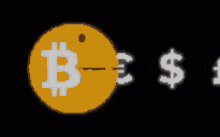Posted on February 14, 2025
Post-Quantum Cryptography
Post-Quantum Cryptograp
Post-Quantum Cryptography (PQC) refers to cryptographic systems that are secure against both classical and quantum computers. The advent of quantum computing poses a significant threat to current cryptographic schemes, particularly those based on the hardness of problems like integer factorization (used in RSA) and discrete logarithms (used in Diffie-Hellman key exchange and elliptic curve cryptography). Here’s an overview of post-quantum cryptography:
Why Post-Quantum Cryptography?
Quantum Threat: Shor’s algorithm, if implemented on a sufficiently powerful quantum computer, could factor large numbers and solve discrete logarithms exponentially faster than classical algorithms, breaking many of today’s encryption methods.
Future-Proofing: Even if large-scale quantum computers are not immediately available, data encrypted today might be stored and decrypted later with future quantum technology.
Key Characteristics of Post-Quantum Algorithms:
Quantum Resistance: These algorithms should not be vulnerable to quantum attacks, relying on problems considered hard for both classical and quantum computers.
Compatibility: They should be implementable within current cryptographic infrastructures with minimal disruption.
Performance: Ideally, they should offer comparable or at least acceptable performance in terms of speed and resource usage compared to classical algorithms.
Main Categories of Post-Quantum Cryptography:
Lattice-Based Cryptography:
Examples: NTRU, Ring-LWE (Learning With Errors), Kyber.
Security: Based on the difficulty of problems related to lattices in high-dimensional spaces, like finding the shortest vector in a lattice.
Code-Based Cryptography:
Example: McEliece cryptosystem.
Security: Relies on the difficulty of decoding a general linear code, which remains hard even with quantum computers.
Hash-Based Cryptography:
Examples: SPHINCS, XMSS.
Security: Uses hash functions to construct signature schemes, which are inherently resistant to quantum attacks since they rely on one-way functions.
Multivariate Polynomial Cryptography:
Examples: Rainbow, UOV.
Security: Based on solving systems of multivariate polynomial equations over finite fields, which is NP-hard.
Isogeny-Based Cryptography:
Example: Supersingular Isogeny Diffie-Hellman (SIDH).
Security: Uses the hardness of finding isogenies between elliptic curves, a problem thought to be quantum-resistant.
Symmetric Cryptography:
While symmetric algorithms like AES are already considered quantum-resistant in terms of brute-force attacks (though Grover’s algorithm halves the key strength), the focus here is on enhancing key management with quantum-safe methods.
Standardization Efforts:
NIST Process: The U.S. National Institute of Standards and Technology (NIST) has been running a competition since 2016 to select post-quantum cryptographic algorithms for standardization. Several candidates have been selected for further analysis and potential standardization.
Implementation Challenges:
Key and Signature Sizes: Many post-quantum algorithms have significantly larger keys or signatures than their classical counterparts, affecting bandwidth and storage.
Performance: Some algorithms might be slower, though this varies.
Interoperability: Transitioning from classical to quantum-resistant systems requires careful planning to ensure compatibility and security during the migration period.
Strategic Considerations:
Hybrid Schemes: Combining classical with post-quantum algorithms to provide security now and in the quantum future.
Crypto-Agility: Systems designed to easily switch or update cryptographic algorithms as new threats or standards emerge.
Long-term Data Security: Encrypting data today with algorithms that will remain secure even if quantum computers become common.
Post-quantum cryptography is crucial for maintaining secure communications and data integrity in a world where quantum computing might become a reality. The field is rapidly evolving, with ongoing research, standardization efforts, and the deployment of early systems in sensitive areas to prepare for a quantum-secure future.





 Bitcoin
Bitcoin  Ethereum
Ethereum  Tether
Tether  XRP
XRP  Dogecoin
Dogecoin  Bitcoin Cash
Bitcoin Cash  Zcash
Zcash  Monero
Monero  Litecoin
Litecoin  PAX Gold
PAX Gold  Solana
Solana